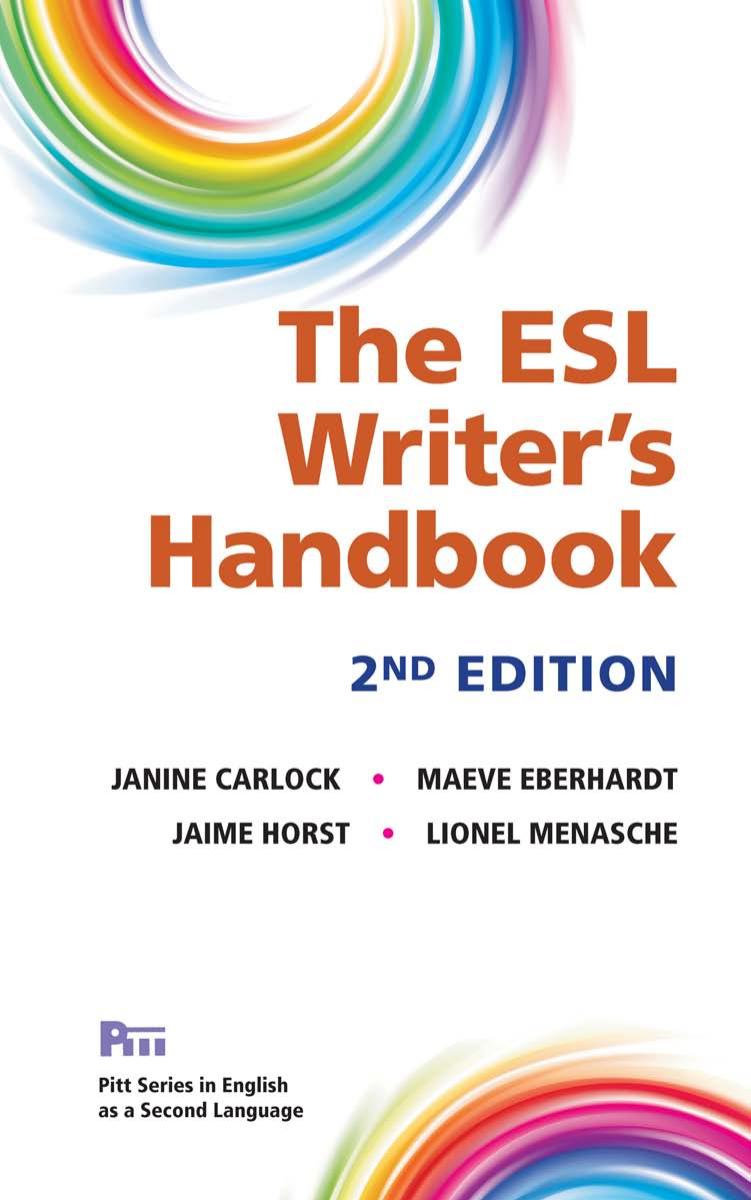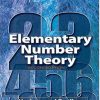ESL Writer Handbook 2nd Edition by Janine Carlock, Maeve Eberhardt, Jaime Horst, Lionel Menasche ISBN 0472037072 9780472037070
$70.00 Original price was: $70.00.$35.00Current price is: $35.00.
Instant download ESL Writer’s Handbook 2nd Edition by Janine Carlock The Janine Carlock & Maeve Eberhardt & Jaime Horst & Lionel Menasche after payment
ESL Writer Handbook 2nd Edition by Janine Carlock, Maeve Eberhardt, Jaime Horst, Lionel Menasche – Ebook PDF Instant Download/Delivery: 0472037072, 9780472037070
Full dowload ESL Writer Handbook 2nd Edition after payment

Product details:
ISBN 10: 0472037072
ISBN 13: 9780472037070
Author: Janine Carlock, Maeve Eberhardt, Jaime Horst &Lionel Menasche
ESL Writer Handbook 2nd Table of contents:
Section 1. The Writing Process
A. Overview of the Writing Process
Thinking about Your Composing Process
Exercise 1.1: Thinking about Composing
Exercise 1.2: Reflecting on the Composing Process
Stages of the Writing Process
Understanding the Assignment
Thinking about Audience
Generating Ideas
Organizing and Outlining Ideas
Drafting
Revising
Editing
B. Understanding Writing Assignments
Key Words in Assignments
Exercise 1.3: Identifying Key Words in Writing Assignments
C. Thinking about Audience
Content
Style
D. Generating Ideas
Idea-Generating Techniques: Points to Consider
Exercise 1.4: Generating Ideas
Section 2. Essay Structure
A. Shaping a Paragraph
Topic Sentences
Exercise 2.1: Topic and Comment
Development Sentences
Exercise 2.2: Topic and Development Sentences
B. Shaping an Essay
General Structure
Introductory Paragraph(s)
Development Paragraphs
Concluding Paragraph(s)
Order of Information
Exercise 2.3: Ordering Information
Organizational Patterns
Combining Patterns of Organization
Exercise 2.4: Key Words and Organizational Patterns in Writing Assignments
Paragraph Development Techniques
Exercise 2.5: Writing Descriptive Sentences
Exercise 2.6: Description: Similes and Metaphors
Exercise 2.7: Writing Definitions
Exercise 2.8: Writing Example Sentences
Exercise 2.9: Using Examples in a Paragraph
Unity and Coherence
Transitions
Exercise 2.10: Transition Words and Phrases
C. Re-Reading and Revising the Essay
D. A 10-Step Guide to the Writing Process
E. Sample Essay
Section 3. Patterns of Essay Organization
A. Narrative Essay
Exercise 3.1: Connecting Ideas in Narrative Writing
Ordering Events: Using When and While
Verb Tense Consistency in Narrative Writing
Example Essay: Narrative
B. Process Essay
Exercise 3.2: Connecting Ideas to Describe a Process
Example Essay: Explaining a Process
C. Comparison/Contrast Essay
Exercise 3.3: Expressing Comparison or Contrast
Example Essay: Comparison and Contrast
D. Cause-and-Effect Essay
Exercise 3.4: Creating a Cause-and-Effect Paragraph
Example Essay: Cause and Effect
E. Argument Essay
How to Construct a Logical Argument
Exercise 3.5: Expressing Arguments
Example Essay: Argument
F. Combining Patterns of Organization
Example Essay with Combined Patterns
Section 4. Research Paper
A. Choosing a Topic
Important Terms
B. Finding Sources
Where to Find Sources
Types of Sources
Evaluating Sources
Exercise 4.1: Evaluating Sources
C. Taking Notes
Guidelines for Taking Notes
D. Summarizing, Paraphrasing, and Using Quotations
Tips for Paraphrasing
Paraphrased Summary Example
Plagiarism
Exercise 4.2: Recognizing Plagiarism of Language
E. Outlining
F. Writing Thesis Statements
Exercise 4.3: Thesis Statements: Argument or Report?
G. Writing Complete Drafts
Structure
Abstract
Introduction
Body
Conclusion
Transitions and Headings
Integrating Sources
Reporting Verbs
Citing Sources
H. Proofreading
I. Citation Style Guides
J. APA Style: References, Format, and Sample Paper
Exercise 4.4: APA References: Correcting Errors
APA Format for Student Research Paper
APA Sample Student Research Paper
K. MLA Style: Works Cited, Format, and Sample Paper
Exercise 4.5: MLA Works Cited: Correcting Errors
What’s New in MLA, 8th Edition?
MLA Format for Student Research Paper
MLA Sample Student Research Paper
Section 5. Grammar and Style
At Word Level
A. Word Form
Exercise 5.1: Recognizing Word Form Errors
B. Articles
Count and Non-Count Nouns
Nouns with General Reference
Nouns with Definite Reference
Nouns Using Zero (No) Article
Exercise 5.2: Using Articles
C. Prepositions
Exercise 5.3: Using Appropriate Prepositions
D. Word Choice in Formal Writing Style
Exercise 5.4: Using More Specific Words
Exercise 5.5: Using More Formal Words
E. Reference Words: Pronouns and Synonyms
Using Pronouns to Avoid Repeating Nouns
Using Demonstrative Pronouns to Avoid Repeating an Entire Phrase
Using Synonyms for Reference
Exercise 5.6: Using Reference Words to Avoid Repetition
F. Reducing Wordiness
Exercise 5.7: Reducing Wordiness
At Sentence Level
G. Parts of a Sentence
Clauses
Exercise 5.8: Identifying Independent and Dependent Clauses
Phrases
H. Subject-Verb Agreement
Exercise 5.9: Practicing Subject-Verb Agreement
I. Run-On Sentences and Sentence Fragments
Run-On Sentences
Sentence Fragments
Exercise 5.10: Correcting Run-On Sentences
Exercise 5.11: Correcting Sentence Fragments
J. Comma Splice
Exercise 5.12: Recognizing Comma Splices
K. Adjective Clauses
Identifying Adjective Clauses
Non-Identifying Adjective Clauses
Exercise 5.13: Comma Use in Adjective Clauses
L. Parallel Structure
Exercise 5.14: Creating Parallel Structures
M. Sentence Combining
Exercise 5.15: Combining Sentences with Subordinators
N. Sentence Variety
Varying the Positions of Modifiers
Changing Emphasis with a Divided Sentence
Example Paragraph and Revision
Section 6. Punctuation
A. Period
End of Sentence
Exercise 6.1: Period at End of Sentence
Decimals
Exercise 6.2: Period with Decimals
B. Question Mark
Exercise 6.3: Question Mark and Period
C. Exclamation Point
Exercise 6.4: Exclamation Point
D. Comma
After Introductory or Transitional Words or Phrases
Exercise 6.5: Comma with Introductory or Transitional Words or Phrases
After Introductory Clauses
Exercise 6.6: Comma after Introductory Clauses
Before Conjunctions
Exercise 6.7: Comma before Conjunctions
In Lists of Words, Phrases, or Clauses
Exercise 6.8: Comma with Lists of Words, Phrases, or Clauses
With Coordinate Adjectives
Exercise 6.9: Comma with Coordinate Adjectives
With Quotations
Exercise 6.10: Comma with Quotations
With Some Abbreviations
Exercise 6.11: Comma with Abbreviations
With Interrupting Expressions
Exercise 6.12: Comma with Contrasting or Interrupting Elements or Those Needing Separation for Clarity
E. Semicolon
With Independent Clauses
Exercise 6.13: Semicolon with Independent Clauses
When Separating Elements with Internal Commas
Exercise 6.14: Semicolon Separating Elements with Internal Commas
F. Colon
Before a Series
Before Long Quotations
Before Short Quotations
Before the Second Part of Sentence
With a Salutation
In Bibliographic References
In Time Expressions
In Ratios
Exercise 6.15: Colon
G. Hyphen
With Compound Nouns
With Compound Adjectives
With Prefixes
With Fractions
With Syllable Division
H. Dash
With Strong Interrupting Element
With Change in Flow of Ideas
With Introductory Series
Before Items Listed in a Category
I. Double Quotation Marks
With Direct Quotations
With Long Direct Quotations
For Reference to Language Use
For Special Meaning
J. Single Quotation Marks
With Direct Quotations
K. Parentheses
With Interrupting Expressions
With Numbers
With Dates
With Citations
L. Brackets
To Show Added Words
To Show Errors in Quoted Passage
To Show Omitted Words
M. Apostrophe
With Contractions
To Show Possession
N. Ellipsis
To Show Omitted Words
O. Capital Letters
At the Beginning of a Sentence
As Part of Spelling
P. Indentation of Paragraphs and Quotations
First Line of Paragraphs
Block Indentation of Long Quotations
Q. Abbreviation Period
Section 7. Quick Reference
A. Connections between Ideas
Examples of Appropriate Expressions for Connecting Ideas
Time
Space
Means
Comparison/Contrast
Concession
Cause/Reason
Condition
Elaboration/Analysis
Referring to a Specific Point in the Text
B. Words Often Confused
C. Active and Passive Voice
D. Verb Tenses
Simple Present
Simple Past
Present Continuous
Past Continuous
Present Perfect
Past Perfect
Present Perfect Continuous
Past Perfect Continuous
Future
Future Continuous
Future Perfect
Future Perfect Continuous
E. Irregular Verb Forms
F. Gerunds and Infinitives
Gerund Functioning as a Noun
Infinitive Functioning as a Noun
Common Verbs Followed by the Gerund
Common Verbs Followed by the Infinitive
Common Verbs Followed by the Gerund or the Infinitive
Common Adjectives (Usually Followed by the Infinitive)
G. Using Prepositions
Phrasal Verbs
Verb + Preposition Combinations
Adjective + Preposition Combinations
Common Preposition + Noun Phrases
Section 8: Special Types of Writing
A. Email Guidelines
Email Do’s
Email Don’ts
Sample Emails
B. Resumes
Length
General Formatting
Content
Language
Sample Resumes
C. Cover Letters
Sample Cover Letter
D. Personal Statements
Guidelines
Sample Personal Statement
Common Correction Symbols for Editing
People also search for ESL Writer Handbook 2nd:
the esl writer’s handbook
esl writers a guide for writing center tutors
esl writers
handbook for everyday writers (grades 2+)


